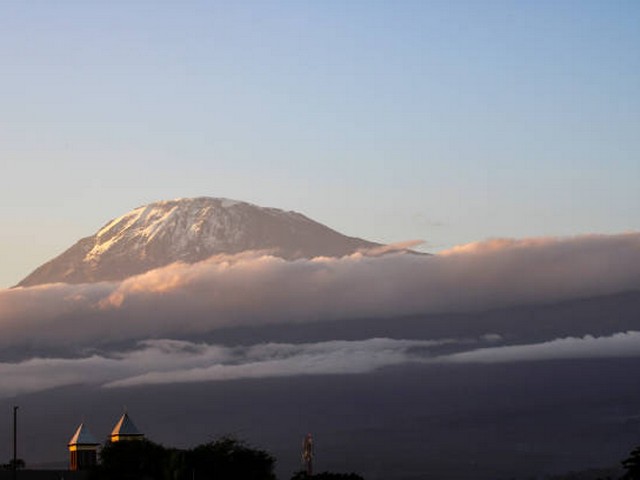Coping With The Effects Of High Altitude On Kilimanjaro
When you set your sights on the majestic Mount Kilimanjaro, you’re not just planning a trek; you’re gearing up for the adventure of a lifetime. At the Kilimanjaro Centre for Trekking and Ecotourism (KCTE), we understand that reaching the summit of Africa’s highest peak is a dream for many. However, the journey to Uhuru Peak is not without its challenges, the most formidable of which is the high altitude. In this comprehensive guide, we will explore effective strategies for coping with the altitude, ensuring that you enjoy every step of your climb.
Understanding Altitude on Kilimanjaro
Mount Kilimanjaro stands proudly at 5,895 meters (19,341 feet) above sea level, and its high altitude is a significant factor every climber must consider. The thinning air, reduced pressure, and lower oxygen levels can affect everyone differently, often leading to altitude sickness.
Symptoms of Altitude Sickness:
- Headaches
- Nausea
- Dizziness
- Fatigue
- Shortness of breath
- Difficulty sleeping
Preparing adequately for these conditions is crucial, and at KCTE, we prioritize your well-being and safety above all else.
Pre-Climb Preparation
Get a Clean Bill of Health
Before you even book your flight to Tanzania, it’s essential to consult with your doctor. Get a physical examination to ensure that you’re in good health and discuss any concerns about high altitude climbing.
Physical Conditioning
Start your physical preparation months in advance. Focus on cardiovascular fitness, strength training, and hiking. Regular exercise will enhance your stamina and reduce the shock your body experiences due to sudden physical exertion at high elevations.
Acclimatization Strategies
Choose the Right Route
At KCTE, we offer various routes that incorporate longer ascents to help with acclimatization. Routes like Lemosho and Machame provide more gradual climbs, allowing your body to adjust to the altitude slowly.
Pace Yourself
The Swahili phrase “pole pole” (slowly, slowly) is the mantra on the slopes of Kilimanjaro. Maintaining a pace that allows you to breathe easily is key to preventing altitude sickness.
Stay Hydrated
Dehydration can mimic or worsen the symptoms of altitude sickness. Drinking plenty of water throughout your trek is vital. We recommend consuming between 3 to 4 liters per day.
During the Climb
Listen to Your Body
Our experienced guides at KCTE are trained to monitor climbers for any signs of altitude sickness. However, it’s vital that you communicate openly about how you’re feeling. Symptoms of altitude sickness can be managed if caught early.
Eat Well
Your appetite might decrease at higher altitudes, but maintaining energy through nutritious meals is crucial. We provide balanced meals to keep your energy levels up.
Sleep and Rest
Rest is just as important as the climb itself. Ensure you get adequate sleep each night and take advantage of rest days to allow your body to recover.
Medication and Supplements
Consult with a Specialist
Before taking any medication, consult with a healthcare provider. Medications like Acetazolamide can help prevent and treat the symptoms of altitude sickness, but they are not suitable for everyone.
Natural Supplements
Some climbers find relief in natural remedies such as ginger for nausea or Ginkgo Biloba to improve blood circulation. However, their effectiveness can vary, and you should consult with a healthcare provider before using them.
After the Climb
Recovery
Once you descend, it might take a few days for your body to recover fully from the exertion and the high altitude experience. Ensure you rest adequately and hydrate well even after your tour is completed.
Why Climb Kilimanjaro with KCTE?
Choosing the right tour operator can make the difference between a challenging yet rewarding experience and a difficult, unpleasant one. At KCTE, we pride ourselves on providing expert guides, comprehensive climb support, and a focus on safety and ecological responsibility. Our teams are equipped to help you handle the altitude effectively, ensuring that you have a memorable and successful summit attempt.
FAQs
Q: How long does it take to acclimatize to Kilimanjaro’s altitude?
A: Acclimatization varies, but typically, climbers start feeling better after spending a few days at higher elevations.
Q: Can I climb Kilimanjaro if I have never been at high altitude before?
A: Yes, many first-time high altitude climbers have successfully summited Kilimanjaro. Proper preparation, choosing the right route, and following the guidance of experienced professionals are key.
Q: What is the best time of the year to climb Kilimanjaro?
A: The best times are during the dry months, January to March and June to October. These periods offer clearer skies and more favorable climbing conditions.
Q: Are there age restrictions for climbing Kilimanjaro?
A: At KCTE, we welcome climbers of all ages, though we typically advise that children be at least 10 years old and in excellent health.
Climbing Kilimanjaro is an extraordinary endeavor, and it demands respect and preparation. The effects of high altitude are serious, but with the right approach, they can be managed. At Kilimanjaro Centre for Trekking and Ecotourism, we are committed to making your summit dreams come true while ensuring your journey is safe, enjoyable, and unforgettable. Book your Kilimanjaro adventure with KCTE today, and take the first step towards standing on the roof of Africa.




